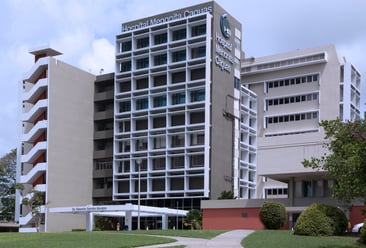 It's not often that cabling is a matter of crisis. But in the case of Mennonite General Hospital in Puerto Rico, where doctors regularly perform invasive, high-risk surgeries into the heart and brain, just a second of latency or downtime could be the difference between success and failure.
It's not often that cabling is a matter of crisis. But in the case of Mennonite General Hospital in Puerto Rico, where doctors regularly perform invasive, high-risk surgeries into the heart and brain, just a second of latency or downtime could be the difference between success and failure.
Setting the Standard for Patient Care in Puerto Rico
Mennonite General Hospital is a nonprofit institution that provides medical services throughout Puerto Rico. Established in 1944 by a group of Mennonite missionaries, the once humble dispensary has grown into one of the island's leading healthcare providers, with multiple locations and facilities that collectively serve thousands of local and international patients every year.
Mennonite General Hospital is unique in Puerto Rico in that it is constantly modernizing its equipment, facilities and services. As a nonprofit organization, it sees reinvesting in its business as critical to its success, enabling it to outfit its facilities and bolster its patient care with the best physicians and the latest medical technologies available.
"We see patients come to us from all across the island with many different conditions, and they trust that we have the expertise and the resources to help them through every stage of their diagnosis and their treatment," says Jose Rivera, Manager of IT Services for Mennonite General Hospital. "It is our job to ensure that they receive the best care available. To do this, we make sure that our facilities have the latest network technologies in place to support our physicians and administrators, and to make all of our patients' experiences more comfortable."
Reliable Networks Make the Difference in Critical Patient Care Communications networks are the foundation of many of Mennonite General Hospital’s daily operations and play a vital role in its patient care. From diagnostic and monitoring equipment to building systems and amenities, Mennonite General Hospital depends on its networks to support the array of medical services they provide. Every employee of the Mennonite General Hospital system must be able to communicate in real time, whether it’s sending patient records to another facility, uploading test results to share with other physicians, or monitoring the myriad of medical equipment staged throughout a building. “Hospitals today are in need of a robust network infrastructure,” says Rivera. “The need for electronic medical records (EMR), picture archiving and communication systems (PACS), IP telephony, security, etc., is critical to our patient care. Everything has to be IP ready!”
Communications networks are the foundation of many of Mennonite General Hospital’s daily operations and play a vital role in its patient care. From diagnostic and monitoring equipment to building systems and amenities, Mennonite General Hospital depends on its networks to support the array of medical services they provide. Every employee of the Mennonite General Hospital system must be able to communicate in real time, whether it’s sending patient records to another facility, uploading test results to share with other physicians, or monitoring the myriad of medical equipment staged throughout a building. “Hospitals today are in need of a robust network infrastructure,” says Rivera. “The need for electronic medical records (EMR), picture archiving and communication systems (PACS), IP telephony, security, etc., is critical to our patient care. Everything has to be IP ready!”
The bandwidth requirements of these operations are tremendous, and these requirements are expected to increase over time. New medical technologies and BYOD (bring-your-own-device) policies are inevitably making their way onto Mennonite General Hospital’s campuses, and placing increasing demands on its local networks.
Seeking to ensure that their network could handle the rising demands of healthcare IT as well as adhere to current TIA standards for healthcare (TIA-1179), Mennonite General Hospital decided to retrofit several of its medical facilities with nCompass Systems, a suite of high-performance copper and optical fiber structured cabling co-engineered by Legrand and Superior Essex.
“Our previous cabling infrastructure would not stand up to the challenge of the next fifteen to twenty-five years with everything being connected to the network,” says Rivera. “It was important to us increase our network capabilities and to adopt the TIA-1179 standard for healthcare to meet these new demands. The nCompass solution was the right foundation for us to build on, one that would allow us to modernize our structured cabling so that we could not only handle our current network demands while meeting, and in some cases, exceeding current industry standards, but would be flexible enough to grow with them.”
Working with the teams from Superior Essex, Legrand, and local rep firms, several nCompass System solutions were designed for use in four Mennonite General Hospital facilities. Those include the Aibonito Hospital, the Cayey Hospital, the Caguas Hospital, as well as its professional headquarters located in Cidra where many of its business operations are based.


.png?width=58&height=58&name=X_logo_2023_(white).png)
